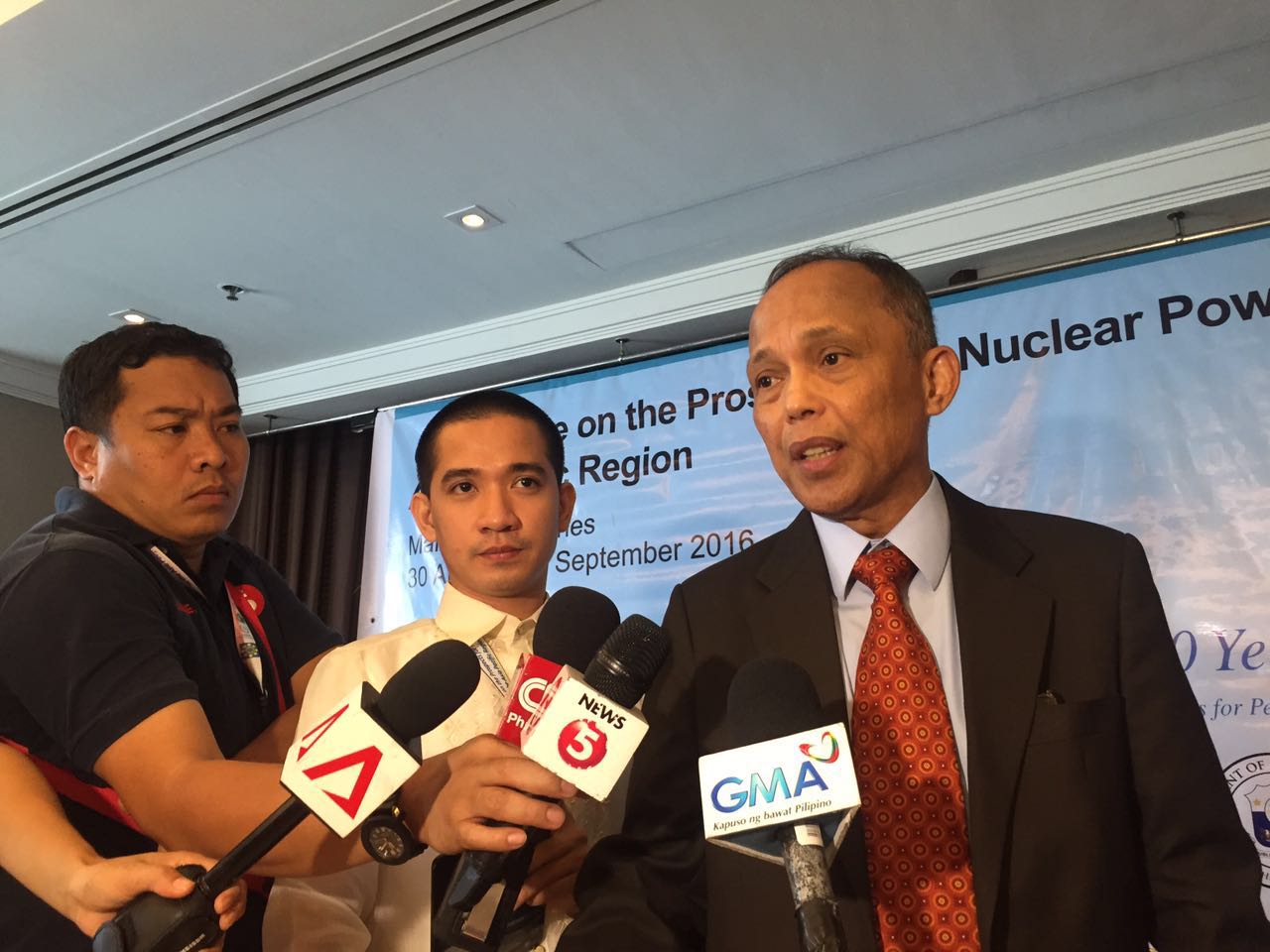A 3-day international conference on nuclear power kicked off on Tuesday in Manila as the Philippine government reconsiders nuclear energy to solve power shortage and the high cost of electricity.
The conference on the prospects of nuclear power in the Asia-Pacific region was organized by the International Atomic Energy Agency (IAEA) and the International Framework for Nuclear Energy Cooperation (IFNEC).
Eighteen countries are participating in the conference, which is being held at the Diamond Hotel: Bangladesh, Canada, Finland, Indonesia, Japan, Jordan, Kenya, Republic of Korea, Malaysia, Mongolia, Saudi Arabia, South Africa, Sri Lanka, Thailand, the United Arab Emirates, the United States, Vietnam and the Philippines.
In his welcome remarks, Energy Undersecretary Donato Marcos said the event will look into the potential and “crucial role of nuclear energy in improving a nation’s energy supply” amid institutional and regional challenges.
“We will also learn from the planning and decision-making mechanisms and good practices of experienced countries and organizations,” he said.
Energy Secretary Alfonso Cusi said the conference is in line with the country’s commitment to the earlier APEC Energy Ministers’ Meeting where member economies highlighted “the importance of safe and efficient development of civil nuclear power as a baseload power option to clean, high-quality and advanced modern energy.”
Energy mix
In an ambush interview, Cusi said that the Philippines has to find a right “energy mix” that would secure its power supply in the long run.
He said the country cannot rely on coal or oil alone and should consider nuclear, which he said does not fluctuate in prices.
“Among all the studies, the cheapest power source is nuclear…We want to be competitive with the rest of our neighbors so we have to come up with a cheap source of energy and that is really nuclear,” he said. “Our neighbors are starting already.”
He explained that renewable energy will remain. “We want to develop our geothermal, our hydro. The solar will continue, the biomass will continue. That’s part of the mix,” he said.
Nuclear power for PH
Cusi said there is no timeline yet for the government’s development of nuclear energy.
“What we are doing now is part of the process of information campaign,” he said, adding that it is part of their agency’s job to look into alternatives.
He said the Philippines was once ahead of the pack when the controversial Bataan Nuclear Power Plant (BNPP) was constructed in the 1970s.
“We are the first in our region and suddenly we are the last,” he said.
Asked if the country can still use the BNPP, he said initial findings show that it can still be operated but they will have to determine up to what capacity or if it is “worthwhile.”
The BNPP was constructed during the term of former President Ferdinand Marcos. Because of nuclear-related disasters in other parts of the country, it was decided by the next administration that it should not operate. Earlier inquiries also revealed that it was built near a major geological fault line.
Cusi also dismissed questions about the large upfront capital needed for a nuclear power plant.
“You will spread your capital cost so even in the beginning it will still be the cheapest source even if the capital investment is big,” he said.
The secretary said they are already working on a road map and consulting Filipino experts on nuclear power. He said Mindanao can be an option as a nuclear power plant site since it is not prone to earthquakes.
The results of their study will be presented to President Rodrigo Duterte.
Consequences
In his welcome speech, Senate President Aquilino “Koko” Pimentel III said that the country needs an economy “powered by clean, cheap, and reliable sources of energy.”
However, he said that while nuclear power has so much potential, it can also have “serious negative consequences” for a country like the Philippines that is in the earthquake-prone region of the Pacific “Ring of Fire.”
“Our conclusions must be based on scientific evidence and not on political or ideological considerations,” Pimentel said.
The Philippine Movement for Climate Justice (PMCJ) said the conference seems to be another move of the government to revive the mothballed BNPP, which has resulted in millions of dollars of debt for the country.
“Nuclear energy while it is not a major contributor to climate change poses more danger to humanity than any kind of calamity or disaster known,” PMCJ national coordinator Ian Rivera said in a statement.
The group said that even with advanced technology, nuclear disasters still happened in industrialized countries.
“The Chernobyl in Russia, the partial meltdown in Pennsylvania, USA and most recently in Fukushima, Japan all resulted in catastrophic effects that lasted for several years,” it said.
The group warned that a nuclear meltdown can cause “massive deaths and destruction to environment.”
“Why are we desperately trying to have a nuclear (plant) that is so expensive and dangerous when cheap, clean and safe renewable energy is vast and readily available in the Philippines? They are actually becoming more and more cheap than any other kind of energy sources,” said PMCJ energy transformation officer Glenn Ymata.
Ymata said the Philippines and its high poverty incidence cannot withstand the disaster that may be brought about by a nuclear accident. RAM/rga
RELATED STORIES
PH launches ‘clean’ nuclear tourism
For gov’t, nuclear energy now a viable option
RELATED VIDEO
